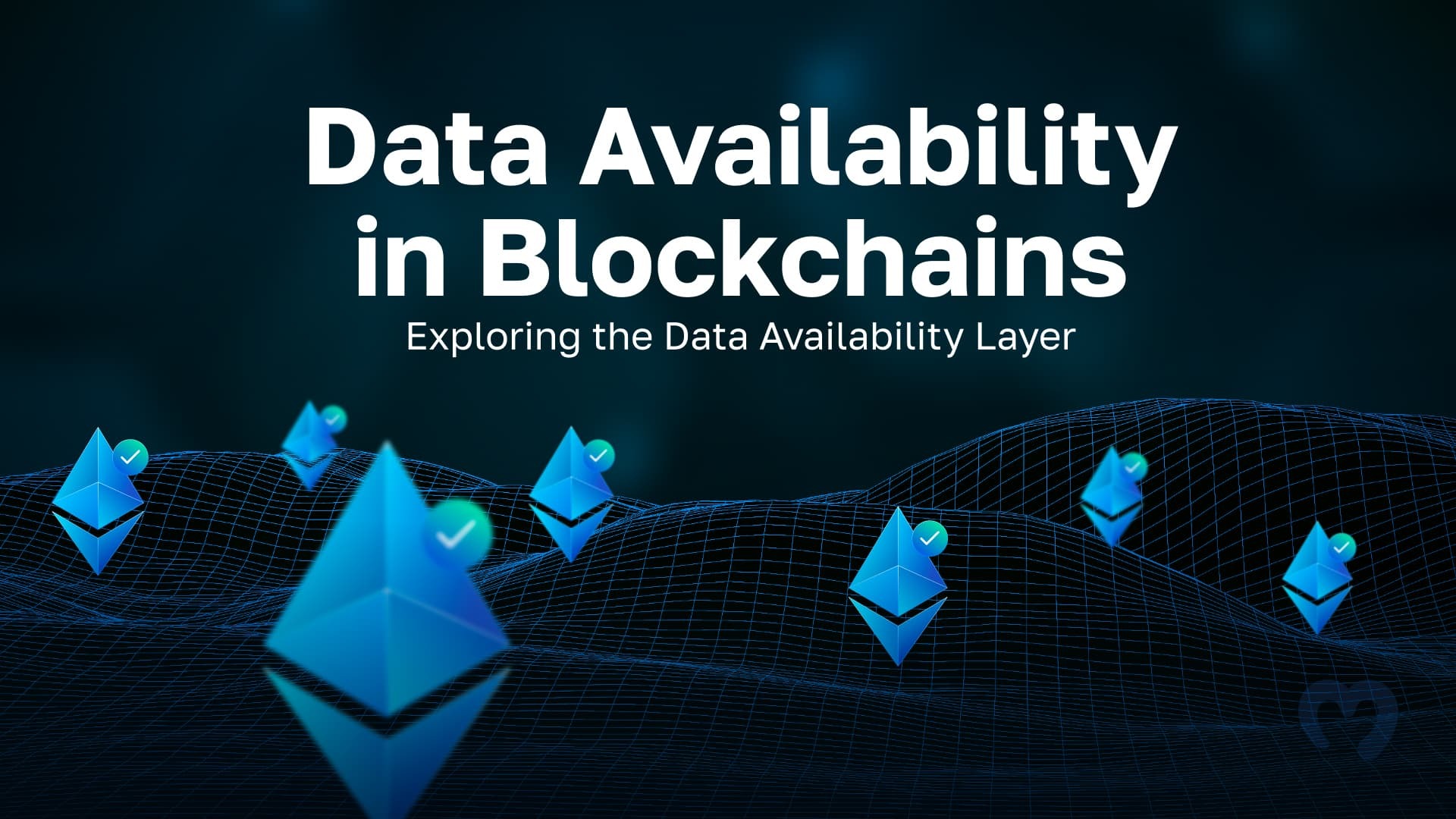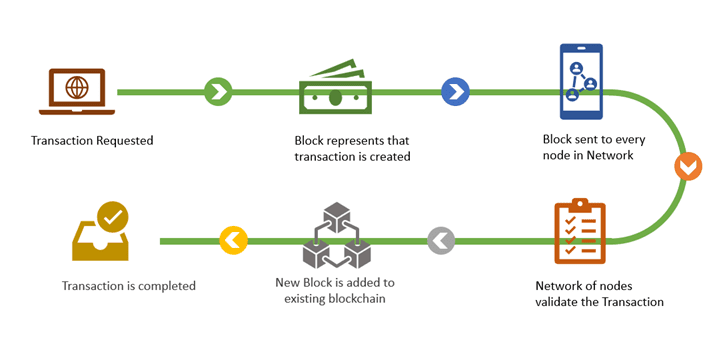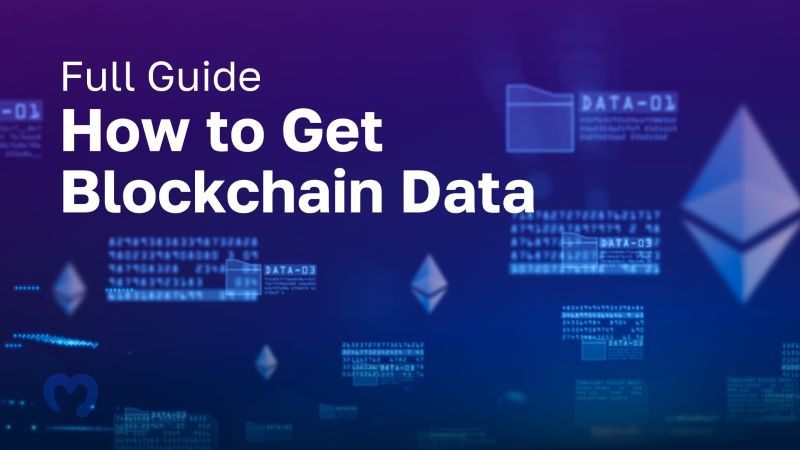What is data availability blockchain? It’s more than just tech buzz—it’s your key to a future where data is not just safe, but also readily accessible when you need it. In the world of endless data breaches and cyber threats, imagine having a vault so secure yet so open to you, the rightful owner. That’s what blockchain data availability is all about. It ensures that your valuable info stays intact and within reach, without giving away the keys to any digital lockpickers out there. It redefines access, making it a fortress that only welcomes the guests you choose. Now, let’s delve into how this powerhouse of privacy and availability works, shall we?
The Cornerstones of Blockchain Data Availability
Ensuring Data Integrity with Blockchain
You might wonder what keeps blockchain so safe. It’s all about making sure data is what it claims to be. When we talk about data integrity, we’re saying that the information hasn’t been messed with. In blockchain, this is key. Why? Because once data goes into a blockchain, it’s there for good. Nobody can sneak in and change it. How cool is that?
But it’s not just about being unable to change data. With blockchain, you also get details on where data came from. Plus, you can trust that it’s the real deal. This trust comes from a mix of math and clever tech. It makes sure everything checks out. Kind of like how you know your favorite snack brand always tastes awesome!
Principles of Blockchain Data Storage
Now, storing data on a blockchain is a whole new ball game. Forget about just one place holding all the info. With blockchains, everyone has a copy of the same records. It’s like sharing a secret recipe with your whole squad. If one pal forgets it, no biggie, because everyone else remembers. This is what we call decentralization.
Decentralization rocks because it takes away single points of failure. If one computer goes down, the others step up. No lost info. No downtime. It’s a team effort that keeps everything running smooth.
Remember how we talked about the whole no-changing-data thing? That’s important here, too. Once a block of data joins the chain, that’s it. It’s part of a longer story that can’t be erased or overruled. This makes blockchain super reliable.
Alright, but how does the blockchain decide what data to add? It’s all about the rules. Every blockchain has them. They’re like the keeper of the ledger. These rules decide what information gets the thumbs-up to join the party. Only the data that follows the rules can find its spot on the chain. This keeps things fair and orderly.
So there you have it. The one-two punch of integrity and smart storage is what gives blockchain its power. It’s a system that’s all about sharing, verifying, and keeping things together. With blockchain, your data’s not just stored; it’s locked down tight and double-checked. Ain’t nobody tampering with your digital treasures here!
The Role of Nodes and Consensus in Blockchain Accessibility
How Blockchains Store Information
Have you ever wondered how blockchains keep data safe? It’s like a digital filing cabinet. In this cabinet, each drawer stores records in a chain. Every drawer has a lock that everyone can check, but no one can break into. This is how blockchains store information.
Blockchains use many computers to keep data. These computers, called nodes, hold the same files. This means that the files are in many places at once. If one node goes down, the others still have the data. This is key for data availability in blockchain technology.
Nodes work together to keep data correct. They talk to each other to agree on what the files say. This makes sure the data stays true and safe for everyone. With blockchains, we know the information will be there when we need it. That’s a big plus for blockchain reliability and access.
Data integrity with blockchain is like a game where players must agree on the score. Everyone keeps track, so no cheating happens. If one player tries to change the score, the others will call foul. Blockchains work like this to make sure no one changes the data.
Consensus Mechanisms and Data Availability
A consensus mechanism is a way for all nodes to agree. It’s like when a team chooses where to eat after the game. They talk it out until they all say yes to the same plan.
Consensus mechanisms in blockchains make sure everyone agrees on the data. This is how they ensure data is always there when needed. It’s like when your friend promises to back you up. You trust them to be there because they always show up.
With consensus, blockchains keep data safe and ready. It’s a system that checks itself over and over to avoid mistakes. If one part of the system goes wrong, the rest of the network steps in to fix it. This built-in teamwork makes blockchain systems tough, like a sturdy bridge that can carry lots of traffic.
People who run the nodes use consensus to check data. When someone sends new data, all nodes look it over. They check it against the rules and their copies of the blockchain. If the data fits, it joins the blockchain. Once it joins, it is very hard to change. This keeps the data the same across all nodes. It’s like when a team gets jackets with their names on them. Now everyone knows who is on the team.
This process makes blockchains stand out. It makes them a great choice for keeping data that can’t be messed with. This is why we call it immutable data storage on blockchain.
So, nodes and consensus are big deals for blockchain. They work together to make sure data can always be found. They keep it safe, and they make sure it’s correct. This is how blockchains promise to always have your data when you need it. This promise gives us blockchain accessibility and uptime we can count on.
Innovations Enhancing Blockchain Data Distribution
Sharding for Blockchain Data Availability
Have you ever tried to break a chocolate bar into pieces so everyone gets a bit? Sharding in the blockchain world works a bit like that. It breaks data into smaller parts. This makes it easier to handle and reach. Just like sharing treats makes everyone happy, sharding helps keep our blockchain world running smooth.
Now, what does this do for us? It spreads the data across a network. This means that not only one computer holds all the information. Instead, many have parts of it. With sharding, we make sure no single point can fail and wipe all our data. This means if one part goes down, others still have the info, and our stuff stays safe.
Sharding also speeds things up. With each part of the sharded data working on its own, more work gets done fast. It’s like when a team works on a puzzle together, rather than one person doing it all. Everyone does a bit, and the job is done quicker!
So, sharding helps with storing bits of data across many places. This makes it safe and fast to use blockchain for what we need.
Smart Contract Data Storage and Retrieval Processes
How about a safe that opens only if you say the magic word? Imagine that in the digital world, and you’ve got smart contracts. These are like automatic rules on the blockchain. When conditions are met, things just happen, no need for a person to say go!
Think of it as a vending machine. You choose what you want, pay, and it gives you your snack. Smart contracts work in a similar way. They take in data and when the right conditions are met, they give back results or make changes.
This method is so reliable that it’s revolutionizing how we handle data. It doesn’t tire or make mistakes as humans sometimes do. This leads to data being safe and sound.
Also, it lets us connect with anyone in the world without worry. We trust the system to do its job right every time. This is huge because it builds trust in how we share and manage data in the digital world.
Smart contracts make data storage and getting it back simple and safe. They change the way we think about managing data. With these, blockchain becomes a powerhouse for secure and reliable data.
These innovations show just how smart and safe blockchain can make our data. As we use these cool ideas, we look forward to a future where our info is as safe as it can be, and easy to reach, too!
Balancing Transparency, Privacy, and Security in Data Access
Availability Versus Privacy in Blockchain
Have you ever lost track of your keys? You search everywhere, feeling lost and locked out. Now imagine your keys are pieces of data, the places you search are network nodes, and your house represents various services and platforms you utilize daily. Data availability in blockchain technology ensures you find those ‘keys’ easily, every time you need them. It keeps data out in the open for use and verification by anyone in the network. But, just like when you find your keys, you need to know they won’t be copied or stolen. That’s where privacy in blockchain comes in. It encrypts your data, turning it into something like a secret code. Only those meant to decipher it can, despite it lying in plain sight.
But can we balance this openness with keeping things under wraps?
Yes, and it works a bit like a game of hide and seek. The details you put on the blockchain are out there – that’s what makes the blockchain reliable and accessible. But encryption shields them, revealing information only to those playing the game by the rules. This balance keeps your data safe but also useful and ready when needed. Nodes, which are like the scouts in this game, help disperse info across the peer-to-peer network. They replicate data across the blockchain, making sure it’s always there if a node takes a hit.
Fault tolerance in blockchain systems is crucial. It means if some part of the network goes kaput, the overall system keeps on ticking. This resiliency is a huge plus, giving blockchain accessibility and uptime a thumbs-up.
Encryption and Data Security in Blockchain
Our digital lives scream for security. Enter encryption in blockchain, your digital guard dog. Encryption uses complex math to secure data, like creating a puzzle that only the correct key can solve. When you put data on a blockchain, like storing money in a digital wallet, encryption is what keeps it from falling into the wrong hands.
Think of blockchain hash functions as unique digital fingerprints for data. No two chunks have the same print. This way, if someone meddles with the info, it’s easy to spot because the fingerprint changes. This is part of ensuring data integrity with blockchain. It’s like making sure your lock isn’t picked by checking it’s still tricky to crack.
Immutable data storage on blockchain locks down your data for good. Once it’s there, it sticks, sealed like a time capsule. That’s amazing for trust, because what you see is what you get, always. But to keep this fortress safe, continuous work on blockchain scalability and data management unfolds. It’s like making sure your vault is big enough and strong enough for an ever-growing treasure.
Every time blockchain technology takes a step forward, it must toe the line between being an open book and a sealed safe. This tug-of-war keeps the gears turning, ensuring what started as a ledger for digital coins morphs into a bedrock of secure, transparent, and private digital existence.
In this post, we dived into the key parts of blockchain data availability. We looked at how blockchain keeps data safe and stores it well. Next, we explored how blockchain saves info and how nodes and consensus make data easy to get. We also saw cool new things that make blockchain data spread out better, like sharding and smart contracts. At last, we talked about getting data easy but keeping it private and secure.
I believe that managing blockchain data is about finding the right balance. Safety, getting data without trouble, and keeping private things private are all must-haves. With the right tech and smart rules, blockchains can protect our data and keep it ready to use. This is not easy, but it’s worth it. Good blockchain systems build trust and let us share and use data without fear. Let’s keep pushing for blockchains that do all these things right.
Q&A :
What is meant by data availability in blockchain technology?
Data availability in blockchain technology refers to the ability of a blockchain network to ensure that all the data related to transactions is readily accessible by participants. This concept is crucial for maintaining transparency, enabling validation of transactions, and ensuring the network’s integrity.
How does data availability affect the security and functionality of a blockchain?
Data availability affects security by preventing data withholding and similar attacks that undermine the trustworthiness of the blockchain. It influences functionality by allowing nodes to verify transactions without needing to trust other participants, which is fundamental to the decentralized nature of blockchains.
What mechanisms do blockchains use to ensure data availability?
Blockchains use various mechanisms to ensure data availability, including data redundancy, distributed file storage, erasure coding, and cryptographic proofs like Fraud and Data Availability Proofs. These mechanisms allow the blockchain to detect and recover from potential data loss or corruption.
Can blockchain operate effectively if there are issues with data availability?
If there are issues with data availability, a blockchain’s effectiveness can be significantly compromised. It may lead to lags or errors in transaction verification, increased vulnerability to double-spending attacks, and a loss of confidence among users.
What steps can be taken to improve data availability on a blockchain network?
To improve data availability, blockchain networks can implement several measures such as increasing node count, incentivizing full node operations, adopting sharding techniques, and ensuring robust network protocols are in place. These steps help maintain the continuous availability of data, contributing to the overall health and security of the network.


